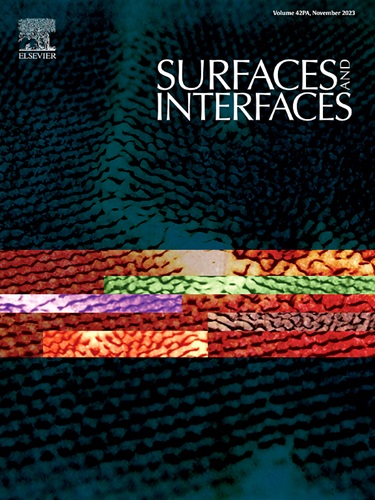Highly adsorptive removal of emerging antibiotics in water using novel Al2O3/SiO2 nanocomposites fabricated from rice husk
IF 5.7
2区 材料科学
Q2 CHEMISTRY, PHYSICAL
引用次数: 0
Abstract
Novel Al2O3/SiO2 nanocomposites were successfully synthesized utilizing rice husk as a precursor. Comprehensive characterization of the Al2O3/SiO2 nanocomposites was performed using X-ray diffraction (XRD), Fourier transform infrared spectroscopy (FTIR), energy-dispersive Xray spectroscopy (EDX), transmission electron microscopy (TEM), and zeta potential analysis. The nanocomposites achieved high removal efficiencies exceeding 90 % for emerging antibiotics, ciprofloxacin (CFX) and ofloxacin (OFX). Optimal conditions for CFX the removal were determined to be a pH of 7, a contact time of 90 min, and an adsorbent dosage of 10 mg/mL while for OFX the optimum paramerers were a pH of 5, a contact time of 60 min, and an adsorbent dosage of 5 mg/mL. The maximum adsorption capacities for CFX and OFX were found to be 124.8 and 22.5 mg/g, respectively. The adsorption processes for both CFX and OFX on the Al2O3/SiO2 nanocomposites follow the pseudo-second-order kinetic and the Freundlich isotherm models, suggesting multilayer chemical adsorption with the interaction force mainly driven by electrostatic interactions. The Al2O3/SiO2 nanocomposites exhibited reusability, retaining over 60 % removal efficiency after four reuse cycles. These results highlight the substainbility for the Al2O3/SiO2 nanocomposites derived from nanosilica rice husk for the removal of antibiotics from aqueous environments.

求助全文
约1分钟内获得全文
求助全文
来源期刊

Surfaces and Interfaces
Chemistry-General Chemistry
CiteScore
8.50
自引率
6.50%
发文量
753
审稿时长
35 days
期刊介绍:
The aim of the journal is to provide a respectful outlet for ''sound science'' papers in all research areas on surfaces and interfaces. We define sound science papers as papers that describe new and well-executed research, but that do not necessarily provide brand new insights or are merely a description of research results.
Surfaces and Interfaces publishes research papers in all fields of surface science which may not always find the right home on first submission to our Elsevier sister journals (Applied Surface, Surface and Coatings Technology, Thin Solid Films)
 求助内容:
求助内容: 应助结果提醒方式:
应助结果提醒方式:


